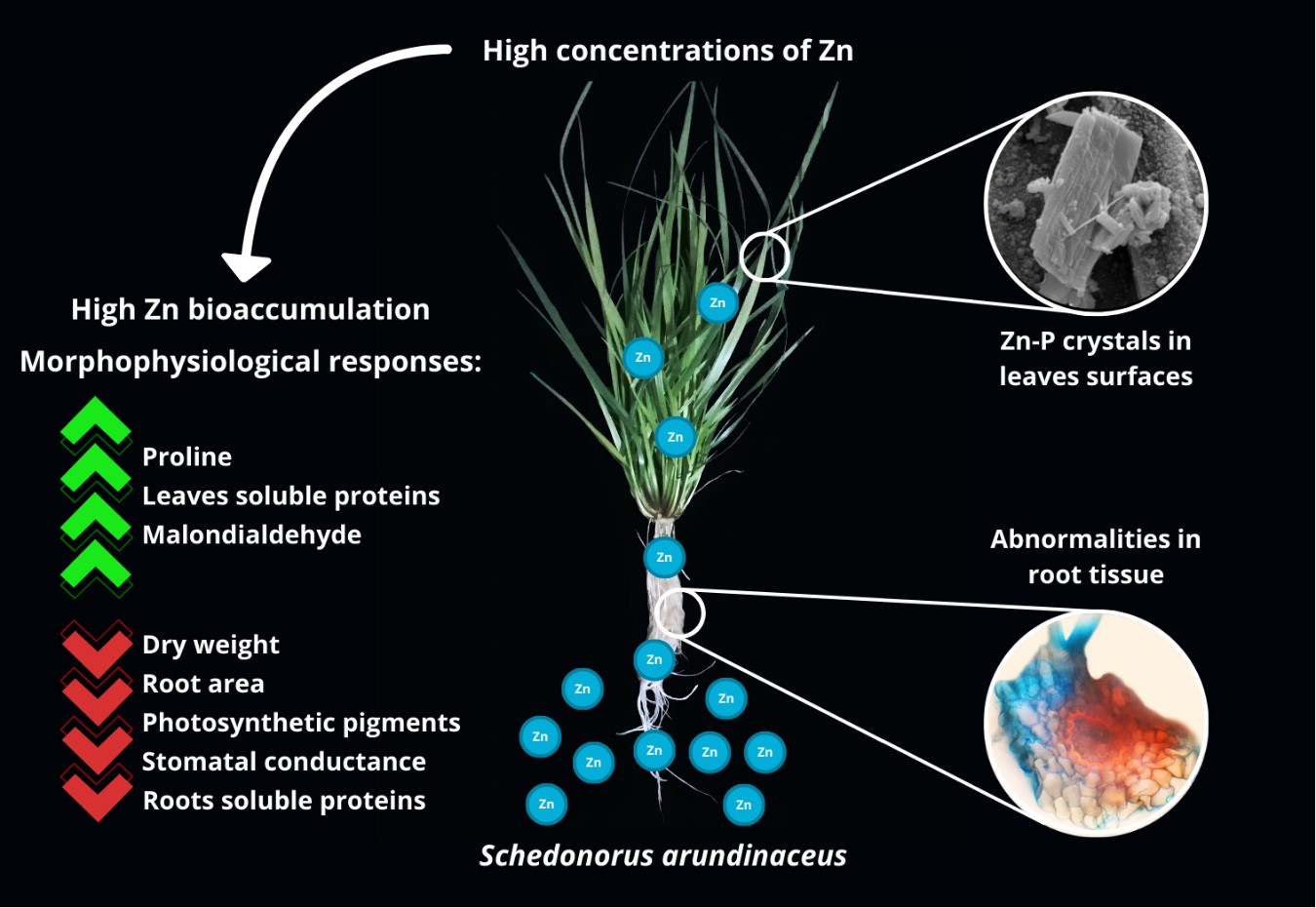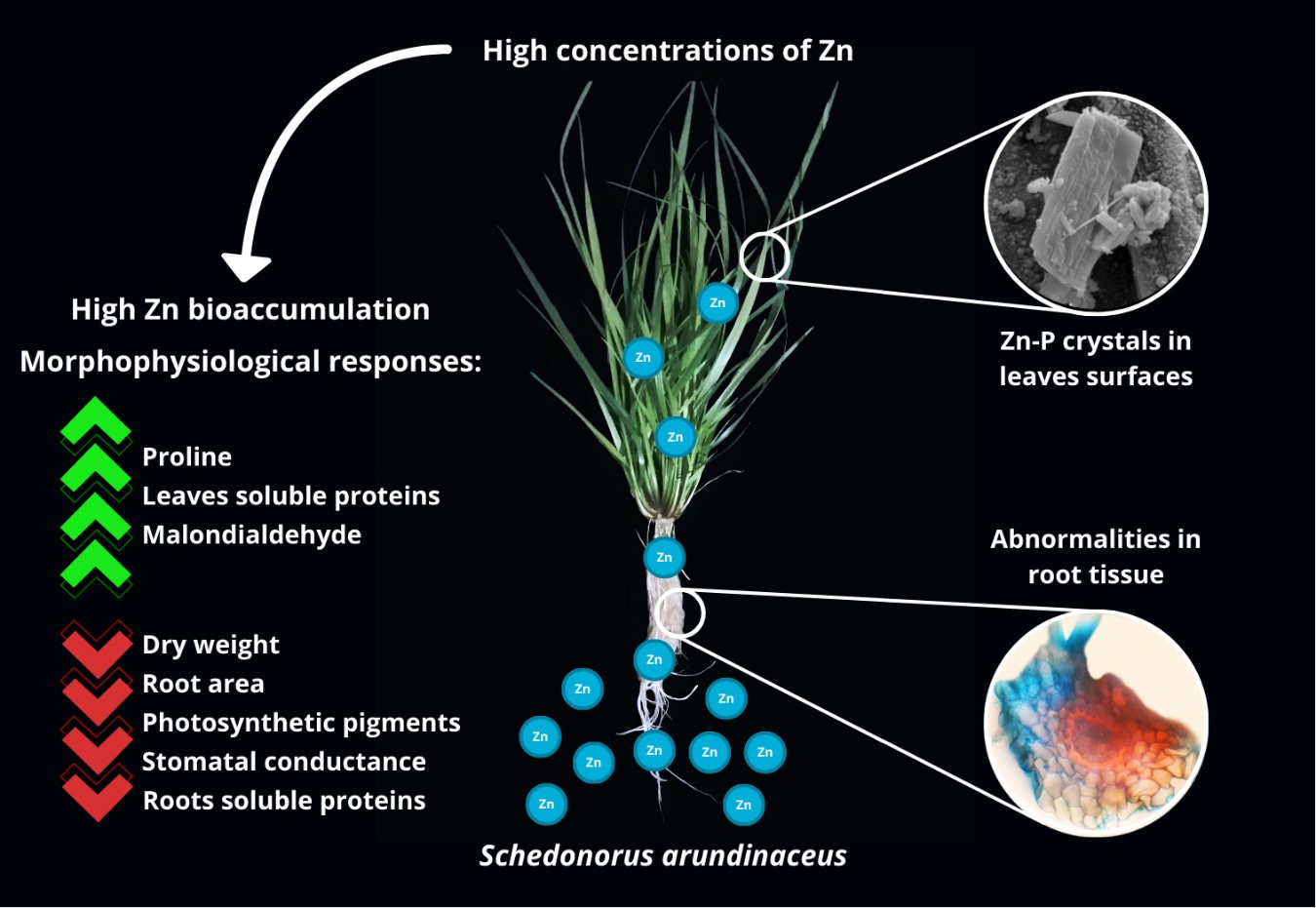Morphophysiological and biochemical responses of Schedonorus arundinaceus to Zinc (II) excess: insights from biomarkers and elemental accumulation
DOI:
https://doi.org/10.48162/rev.39.135Palabras clave:
fitotoxicidad por zinc, adaptación al estrés, daño radical, respuestas fisiológicasResumen

Excessive levels of zinc have detrimental effects on plant physiology and morphology, hindering growth and development. This study aimed to elucidate the morphophysiological and biochemical mechanisms of Schedonorus arundinaceus in response to high concentrations of zinc exposure and to investigate the correlation between these parameters to identify potential stress biomarkers in this species. Plants were exposed to seven zinc concentrations (0-500-1000-1500-2000-2500-3000 μM) for 50 days. The results showed decreased dry weight, root area, photosynthetic pigments, root soluble proteins and stomatal conductance with increasing zinc concentrations. Conversely, proline, malondialdehyde and leaf-soluble protein content increased. Histological observations revealed altered stomata size and abnormalities in root tissue. Zinc accumulation exceeded phytotoxic thresholds (100-400 mg kg-1) even at lower concentrations, reaching a maximum of 3432 mg kg-1 in shoots. Visible Zn-P crystals were observed on leaf surfaces at the highest zinc treatment. These results suggest that S. arundinaceus possesses a notable capacity to bioaccumulate zinc, particularly in the roots. Furthermore, the strong correlation between proline levels and zinc biomass concentration suggests its potential use as a stress biomarker for zinc-induced stress in this species.
Highlights:
- Schedonorus arundinaceus demonstrated high zinc bioaccumulation, reaching up to 3432 mg kg-1 in shoots, surpassing phytotoxic thresholds by approximately 9 times.
- Exposure to high zinc concentrations led to reductions in dry weight, root area, photosynthetic pigments, stomatal conductance and roots soluble proteins content, while increasing proline, malondialdehyde (MDA) and leaves soluble protein content.
- At the highest zinc concentration, visible Zn-P crystals were observed on leaf surfaces, highlighting a unique physiological response.
- Histological observations revealed altered stomata size and, indicating significant morphological adaptations in response to zinc stress.
- The strong correlation between proline levels and zinc bioaccumulation suggests proline as a potential biomarker for zinc-induced stress in Schedonorus arundinaceus.

Descargas
Publicado
Número
Sección
Licencia
Derechos de autor 2018 Revista de la Facultad de Ciencias Agrarias UNCuyo

Esta obra está bajo una licencia internacional Creative Commons Reconocimiento-NoComercial-CompartirIgual 3.0.
Aquellos autores/as que tengan publicaciones con esta revista, aceptan las Políticas Editoriales.



